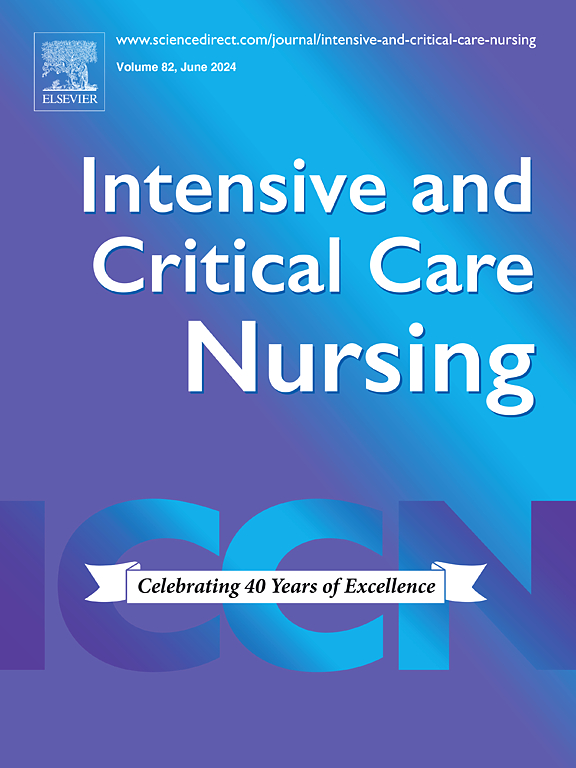ICU护士的工作量:护理活动评分的系统回顾和荟萃分析
IF 4.7
2区 医学
Q1 NURSING
引用次数: 0
摘要
重症监护病房(icu)是高需求的环境,护士工作量管理对于确保高质量的患者护理和护士福祉至关重要。护理活动评分(NAS)被广泛用于量化护理工作量,但个别研究报告了不同的结果。本系统综述和荟萃分析旨在综合使用NAS的ICU护理工作量的全球数据。方法在没有语言限制的多个数据库中进行综合文献检索,找出报告NAS平均分数的研究。数据由两名独立审稿人提取,并进行随机效应荟萃分析以汇总NAS值。采用亚组分析和元回归来探讨异质性的来源。结果共纳入70项观察性研究,包括56042例ICU患者的数据。荟萃分析显示,合并平均NAS为66.2% (95% CI: 62.6-69.8%),表明ICU护士平均将近三分之二的轮班时间用于直接护理单个患者。在患者入院和早班期间观察到更高的NAS值,在COVID-19期间与大流行前的水平相比显着增加。结论:我们的分析显示,ICU护士将其轮班的很大一部分用于直接护理患者,特别是在高需求时期。这些发现挑战了传统的护士与病人比例,表明需要灵活的人员配置模式。在一些国家,目前ICU护理人员的水平可能无法满足平均护理工作量。应考虑动态人员配置模式,以考虑增加的护理工作量。本文章由计算机程序翻译,如有差异,请以英文原文为准。
Workload in ICU nurses: A systematic review and meta-analysis of the Nursing Activities Score
Aim
Intensive care units (ICUs) are high-demand environments where nurse workload management is critical for ensuring quality patient care and nurse well-being. The Nursing Activities Score (NAS) is widely used to quantify nursing workload, yet individual studies report heterogeneous findings. This systematic review and meta-analysis aimed to synthesize global data on ICU nursing workload using the NAS.
Methods
A comprehensive literature search was conducted in multiple databases without language restrictions, identifying studies reporting mean NAS scores. Data were extracted by two independent reviewers, and a random-effects meta-analysis was performed to pool NAS values. Subgroup analyses and meta-regression were conducted to explore sources of heterogeneity.
Results
A total of 70 observational studies, encompassing data from 56,042 ICU patients, were included. The meta-analysis revealed a pooled mean NAS of 66.2% (95% CI: 62.6–69.8%), indicating that, on average, ICU nurses spend nearly two-thirds of their shift on direct patient care for a single patient. Higher NAS values were observed during patient admission and the morning shift, with a significant increase during the COVID-19 period compared to pre-pandemic levels.
Conclusion
Our analysis revealed that ICU nurses spend a substantial part of their shift on direct patient care, especially during high-demand periods. These findings challenge traditional nurse-to-patient ratios, suggesting the need for flexible staffing models.
Implications for Clinical Practice
The current nursing staff level within ICU settings may not be adequate for the average nursing workload in some countries. Consideration should be given to dynamic staffing models that can consider increased nursing workload.
求助全文
通过发布文献求助,成功后即可免费获取论文全文。
去求助
来源期刊

Intensive and Critical Care Nursing
NURSING-
CiteScore
6.30
自引率
15.10%
发文量
144
审稿时长
57 days
期刊介绍:
The aims of Intensive and Critical Care Nursing are to promote excellence of care of critically ill patients by specialist nurses and their professional colleagues; to provide an international and interdisciplinary forum for the publication, dissemination and exchange of research findings, experience and ideas; to develop and enhance the knowledge, skills, attitudes and creative thinking essential to good critical care nursing practice. The journal publishes reviews, updates and feature articles in addition to original papers and significant preliminary communications. Articles may deal with any part of practice including relevant clinical, research, educational, psychological and technological aspects.
 求助内容:
求助内容: 应助结果提醒方式:
应助结果提醒方式:


